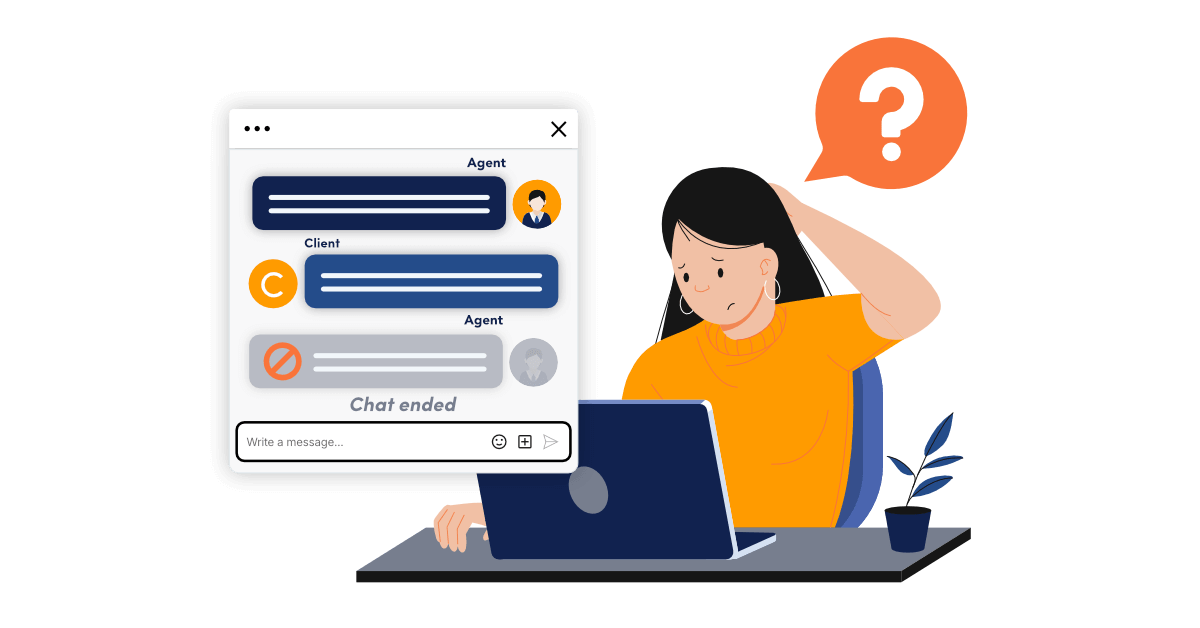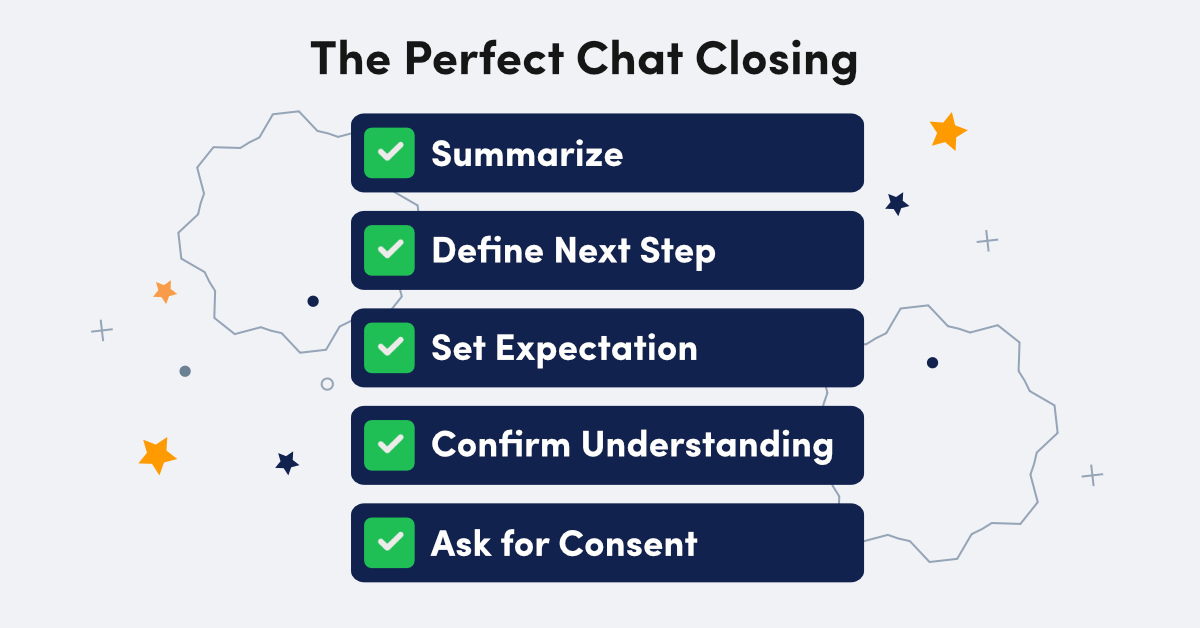You wouldn’t leave a business meeting without wrapping things up first… right? So why leave your customer hanging at the end of a chat! Even the shortest conversation is a kind of “mini-meeting”. And just like in any meeting, the way you close matters. A clear, confident ending shows the customer what happens next, builds trust, and keeps the momentum going. If you end without saying what’s next, the customer might feel lost. You’ve done great work, now just add a clear step forward. It’s a small thing that makes a big difference.
We’ve covered how to start conversations, guide them with empathy, and take the initiative. Now we turn to the crucial final act: the closing. Every chat conversation must end with absolute clarity. The customer should never leave wondering, “What happens now?” Defining the next step is about managing expectations, building trust, and creating a seamless transition from the chat to whatever comes next, whether that’s a purchase, a follow-up email, or a test drive.
The Danger of an Ambiguous Ending
When a chat ends without a clear plan, you create uncertainty. This uncertainty can quickly erode the trust and rapport your agent has worked so hard to build. The customer might wonder:
- “Did they actually pass my issue along to the technical team?”
- “When will I receive the quote they promised?”
- “Am I supposed to do something now, or just wait?”
This ambiguity is not just poor customer service; it’s a business risk. It can lead to frustrated customers, duplicate support requests, and lost sales opportunities. Furthermore, in an era of data privacy regulations like GDPR, obtaining clear consent for follow-up actions is not just good practice-it’s a legal requirement. A structured closing ensures you cover all these bases, every single time.

From Vague to Valuable: The Art of the Closing Statement
A strong closing statement has three key components: it summarizes what was agreed upon, it clearly defines the next action (for either the agent or the customer), and it sets a timeframe.
Scenario 1: Handing the Conversation Off
- The Vague Closing:
Agent 10:50 PM
Customer 10:51 PM
Agent 10:52 PM
This is unhelpful and unprofessional.
"Soon" means nothing, and "someone" inspires zero confidence.
- The Clear, Professional Closing:
Agent 11:00 PM
Customer 11:01 PM
The agent has provided specifics: who will be in touch (John), how (email), and when (within two hours).
They also asked for confirmation, ensuring the customer is on board.
Scenario 2: Finalizing a Sales Quote
- The Vague Closing:
Agent 11:10 PM
Customer 11:11 PM
The agent has missed a critical opportunity to gather consent and set expectations.
- The Clear, Professional Closing:
Agent 11:20 PM
Customer 11:21 PM
Agent 11:22 PM
The agent has clearly stated what they need, why they need it, obtained consent, and confirmed the action was completed.
Your Toolkit for a Perfect Closing
LiveChat features can help you standardize and professionalize your chat closings.
- Chat Transcripts: Empower your customers by offering to send them a transcript of the conversation. This provides them with a written record of what was discussed and agreed upon, reinforcing the clarity of the next steps. You can enable this feature, so customers can request a transcript with a single click. Learn how here: Chat transcripts.
- CRM Integrations: The promises made in a chat must be kept. Integrating LiveChat with your CRM (like Salesforce, HubSpot, or others) is the best way to ensure a smooth handoff. When an agent promises a follow-up call, the integration can automatically create a task in the CRM for the assigned salesperson, complete with the chat transcript. This operationalizes your closing process and ensures nothing falls through the cracks. Explore integrations in the LiveChat Marketplace.
How do you make sure every agent, from the rookie to the veteran, follows these crucial closing steps on every single chat? You build it into their workflow with Super Trainer automations.
You can create a “Chat Closing Checklist” that automatically appears for the agent when a chat is about to end. This checklist acts as a final quality gate, prompting the agent to confirm they’ve completed the essential steps. The checklist could include:
✅ Key points summarized for the customer.
✅ Next step clearly defined.
✅ Timeframe for the next step provided.
✅ Customer confirmed their understanding.
✅ Consent for follow-up obtained (if applicable).
By making this a mandatory part of the process, you remove the guesswork. Managers can be confident that every conversation is ending professionally, legally, and in a way that strengthens customer trust, paving the way for future business.
Don’t let a great conversation fall apart at the finish line. Master the art of the closing, and you’ll turn positive chats into lasting customer relationships.





